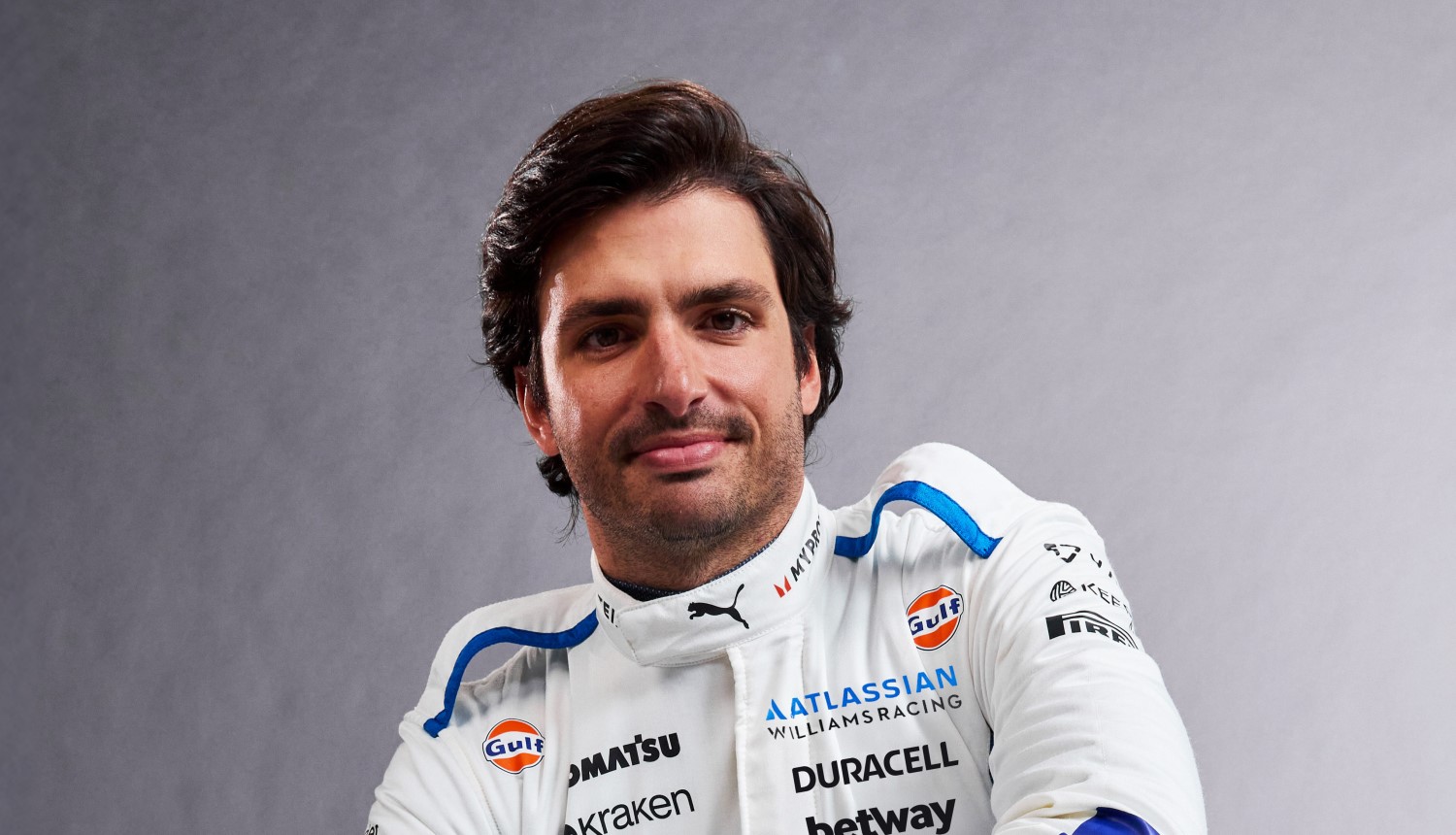Sainz Jr. Calls for Bold Overhaul of F1 Sprint Weekends to Ignite More On-Track Drama
In the ever-evolving spectacle of Formula 1, where every lap counts toward building hype for the main event, Carlos Sainz Jr. (pictured) is championing a shake-up of the Sprint format. Fresh off securing Williams’ best-ever Sprint finish—a podium third at the United States Grand Prix—the Ferrari-turned-Williams driver believes the current setup too often mirrors the opening stint of Sunday’s grand prix, robbing fans of fresh excitement. Speaking to media prior to the recent USGP at Circuit of the Americas, Sainz laid out a “radical” vision to spice things up, starting with a simple tweak but open to bolder experiments.
–by Mark Cipolloni–
The core gripe? Sprint races typically see drivers opt for medium-compound tires, creating a predictable preview of the main race’s early laps. Soft tires, with their high degradation, rarely feature in that phase, leading to processional affairs unless Mother Nature intervenes—like the rain-soaked chaos in Canada or Singapore that Sainz hailed as “the best Sprint in history.” His fix: mandate soft tires for the entire Sprint grid.
“One simple idea could be to make sure everyone does the Sprint race on soft tyres, which is a high-deg tire,” he explained. “Normally, on a very few numbers of tracks, we choose the soft for the first stint of the race, and that could be a very easy, short-term solution.”
Sainz sees this as low-hanging fruit, especially given Pirelli’s allocation woes: Five sets of softs are allocated per weekend, but they’re often used for just one qualifying lap before being discarded. “We put one lap on soft tires in qualifying, and then we give them back… that could be an easy fix,” he noted. But he’s not stopping there. Sainz urged F1’s commercial rights holder, Liberty Media, and FIA President Stefano Domenicali to treat Sprints as a playground for innovation. “The Sprint race should be a bit more spicy,” he said, floating ideas like a “superpole” in the final stage of Sprint Qualifying (SQ3) or even reversed grids—though he’s “not a big fan” of the latter, he’d “not be completely opposed to trying something different.”
This experimental ethos, Sainz argued, could differentiate Sprints from the grand prix without overhauling the sport’s DNA. “You should just keep adding something different and keep trying different things. If it works, great… if it doesn’t, don’t be scared to say, put it in the bin, acknowledge it didn’t work, and try something different.” With F1 eyeing an expansion to 10 Sprint weekends by 2027, his timely pitch arrives amid heated paddock debate: How far is too far in pursuit of entertainment?
Paddock Divided: Enthusiasm for More Action, Wariness of Gimmicks
Sainz isn’t alone in pushing for evolution, but his peers draw a firm line at radical overhauls. A chorus of drivers expressed qualified support for expanding Sprints—perhaps to six or eight per season—but balked at proposals like reverse grids or shortening grands prix, viewing them as undermining F1’s merit-based purity.
Championship leader Oscar Piastri, speaking after the 2025 Italian Grand Prix, welcomed more Sprints as “not necessarily a bad idea,” but stopped short of every weekend. “I don’t think we want or need it to be every weekend,” the McLaren ace said, emphasizing the format’s role in adding variety without dilution. He was unequivocal on reverse grids: “A bad idea, from a sporting and competitive side… the last thing we want as a sport is critical results being decided from reverse grid races.” Piastri contrasted F1’s high stakes with junior series like F2, where such formats merely showcase talent.
Echoing that caution, Sauber’s Nico Hulkenberg called himself “a fan of Sprint races” for their spectacle, provided tracks are chosen wisely—high-overtaking venues over street circuits. Yet, on reverse grids: “Honestly I don’t know, that’s a bit mixed feelings… you need to cover and keep a balance with performance.” Alpine’s Pierre Gasly, ever the pragmatist, joked he’d embrace a reverse grid in 2025 given his team’s struggles but advocated preserving the “DNA of the sport.” “The format that we have at the moment is very good… I’d be happy to keep it as it is,” he said, valuing the three practice sessions for car optimization.
Mercedes rookie Kimi Antonelli, a Sprint pole-sitter in Miami, thrived on the intensity: “One practice, then straight into qualifying… it’s quite intense but it’s very challenging and it’s good.” Aston Martin’s Lance Stroll and Racing Bulls’ Liam Lawson similarly praised the extra racing shots—”something to fight for each time,” per Stroll—making weekends “exciting for teams, drivers, and fans.”
Not everyone shares the optimism. Red Bull’s Max Verstappen, with a record 12 Sprint wins yet zero enthusiasm, dismissed them as “crazy enough for me” and shot down shortening races or grids: “We shouldn’t overdo it.” He likened F1’s variability to football—sometimes thrilling, sometimes not—and defended full-length events as “part of the sport.” McLaren’s Lando Norris echoed a preference for traditional weekends, while Ferrari’s Charles Leclerc decried three practice sessions as “really long and sometimes boring,” suggesting Saturday tweaks but capping Sprints at six annually. Haas’ Esteban Ocon warned of content overload in a 24-race calendar: “Too much can lead to fans switching off.”
Two-time champion Fernando Alonso offered a wildcard: Reintroduce refueling for strategic depth, though aimed at grands prix. “When you can choose your fuel load… that changes completely the way the race unfolds,” he mused, arguing shorter formats might backfire on engagement.
A Format at the Crossroads
As F1 hurtles toward potential Sprint proliferation, Sainz’s call for tire mandates and fearless trials resonates amid a paddock yearning for balance: More racing, yes; manufactured chaos, no. With Domenicali open to tweaks, the coming seasons could redefine weekends—or scrap ideas that flop. After all, as Sainz put it, evolution demands experimentation, not stagnation. The grid’s ready to race the debate.
